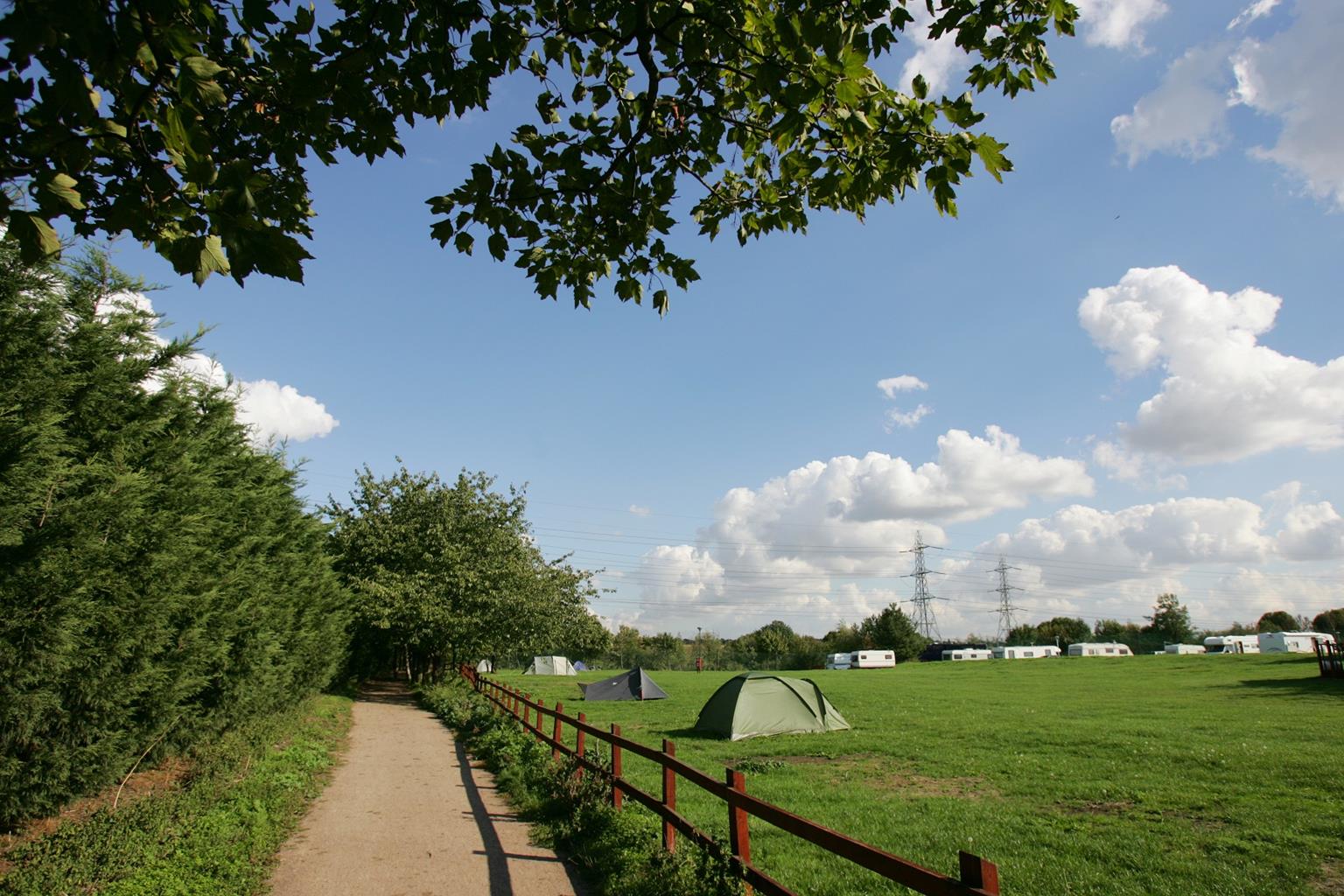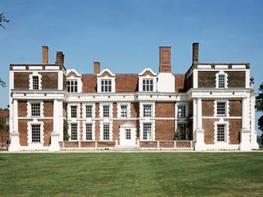Overlooking King George's Reservoir and close to Epping Forest, this popular and very peaceful…
A circuit of Gilwell Park

A fairly challenging walk combines superb London views with the wooded parkland of the Scout Association HQ.
5 miles (8kms)
About the walk
Every Scout has heard of Gilwell Park, the international training and camp centre for the Scout Association. Set on a plateau and flanked by King George's Reservoir in the west and Epping Forest in the east, the 108 acre (43.7ha) wooded estate was bought for the Scout Association in 1919 by a wealthy Scottish publisher, William F de Bois Maclaren.
Through the estate
A public footpath passes through the estate, giving views of the monuments, statues, camp fire circles, Scout huts and in the distance, The White House, now Gilwell Park Hotel and Conference Centre, before descending towards the reservoir. The White House dates back to the 15th century, but was nothing like the grand building you see today. In the mid 18th century it was rebuilt and over the years extended – and renamed – by various owners.
Perhaps the most dynamic occupants were William and Margaret Chinnery, who lived here from 1792 to 1812 and brought new life to the area. They were patrons of the arts, threw lavish parties and were seen in all the right places. But tragedy struck: two of their children died, one aged 12 and the other 21, and shortly afterwards William was dismissed from his Civil Service post when he was accused of fraud. He fled to Gothenburg and never returned, and Margaret moved to Paris.
Scouting for boys
In 1858 William Alfred Gibbs, better known as the inventor of Gibbs Dentifrice toothpaste, became the new owner, but he couldn't afford the upkeep of the house, which was in ruins by the time it was sold to the Scout Association for £7,000. In 1994 The White House was completely renovated, but if you visit today take care; they say that some parts are haunted and that a female ghost walks late at night, lamenting the loss of her children. Some have heard strange rattling chains and clanking footsteps, and others swear they have spotted the figure of Dick Turpin astride Black Bess.
Scouting round Gilwell Park involves some sharp climbs and slippery descents, especially after rain, but the views of north London from the top of Barn Hill are well worth the effort. This walk also takes in the forest paths around Lippitts Hill, where you may hear close-range gunfire and helicopters hovering above a set of army-like buildings. You could be forgiven for thinking that you have accidentally strayed in to an SAS training camp, but the truth is that you are adjacent to the helicopter base of the Metropolitan Police. Lord Baden-Powell of Gilwell, founder of the Scout Movement, no doubt would have warned his protégés to watch out and, if anything, to 'Be Prepared.'
Walk directions
From the Wilson Way visitor car park, pass to the left of The White House and turn right to pass beside the gates of Gilwell Park, following the yellow waymark. Keep to the wide, grassy path between trees and the Scout Association buildings. At the top of the hill there are panoramic views of the reservoir. Follow the steep downhill path with yellow waymarks, with the wood and the pond on your right, and go through a squeeze stile to emerge beside the village hall at Sewardstone. Turn left into Dawes Hill.
Turn left again into Sewardstone Road. Turn right into Mill Lane, passing houses, and maintain your direction on the downhill track towards King George's Reservoir. Turn right and follow the track, with the reservoir and Horsemill Stream on your left, to the footbridge over the stream.
Do not cross the bridge, but go straight through the gate and turn right onto the waymarked London Loop path, walking east until you reach Sewardstone Road. Turn right, and after 100yds (91m) turn left over the stile, ignoring the London Loop path right. Walk up the steep north flank of Barn Hill, stopping to enjoy the tremendous views over reservoirs, Epping Forest and Waltham Abbey. Continue for another 350yds (320m) and cross the farm track.
Turn right onto the wide Green Lane, and turn left before a house at the second public footpath signpost, marked ‘Lippitts Hill’. Follow the yellow waymark posts across the golf course, bearing left at the fencing surrounding the Police Air Support Unit, where helicopter training takes place.
At Lippitts Hill, turn right passing houses and The Owl pub, the gardens of which afford lovely views across Epping Forest. Fifty yards (46m) after the pub turn right at the public footpath signpost, go up wooden steps and onto the steep downhill path via steps. Maintain your direction between horse paddocks and cross the wooden footbridge and another stile. Follow the path over undulating meadow across the flank of the hill, then downhill to houses on your left. At the public footpath sign to Sewardstonebury, go through the metal gate and follow the yellow waymarks across West Essex Golf Course. Maintain direction across fairways and past houses to emerge via a stile into Bury Road. Turn right and then first left to return to the car park.
Additional information
Grassy paths, forest tracks, green lanes, some stretches of road, many stiles
Forest, park, reservoir, waterways and rolling countryside
Great open spaces and forest to sniff about in, but watch for horses
OS Explorer 174 Epping Forest & Lee Valley
Free car park in Gilwell Lane
None on route
WALKING IN SAFETY
Read our tips to look after yourself and the environment when following this walk.
Find out more
Also in the area
About the area
Discover Essex
Essex is full of pleasant surprises. It has the largest coastline of any county in England, with its fair share of castles, royal connections and scenic valleys. Take Colchester, for example, which was built by the Romans and is Britain’s oldest recorded town. Its castle contains the country’s largest Norman keep and yet, a stone’s throw from here, East Anglia’s newest arts centre promises to put Colchester firmly on the map as Essex’s capital of culture.
Tidal estuaries are plentiful and their mudflats offer migrating birds a winter feeding place. Essex was known as the land of the East Saxons and for centuries people from all over Europe settled here, each wave leaving its own distinctive cultural and social mark on the landscape. Walking a little off the beaten track will lead you to the rural retreats of deepest Essex, while all over the county there are ancient monuments to explore:
- the great Waltham Abbey
- Greensted, thought to be the oldest wooden church in the world
- the delightful village of Pleshey has one of the finest examples of a former motte-and-bailey castle
- Hedingham Castle, magnificently preserved and dating from the 11th century.
Nearby stays
Restaurants and Pubs
Nearby experiences
Recommended things to do
Why choose Rated Trips?
Your trusted guide to rated places across the UK
The best coverage
Discover more than 15,000 professionally rated places to stay, eat and visit from across the UK and Ireland.
Quality assured
Choose a place to stay safe in the knowledge that it has been expertly assessed by trained assessors.
Plan your next trip
Search by location or the type of place you're visiting to find your next ideal holiday experience.
Travel inspiration
Read our articles, city guides and recommended things to do for inspiration. We're here to help you explore the UK.













